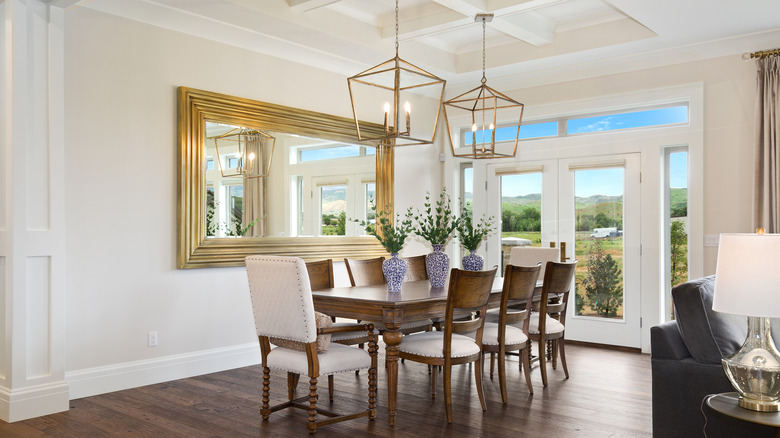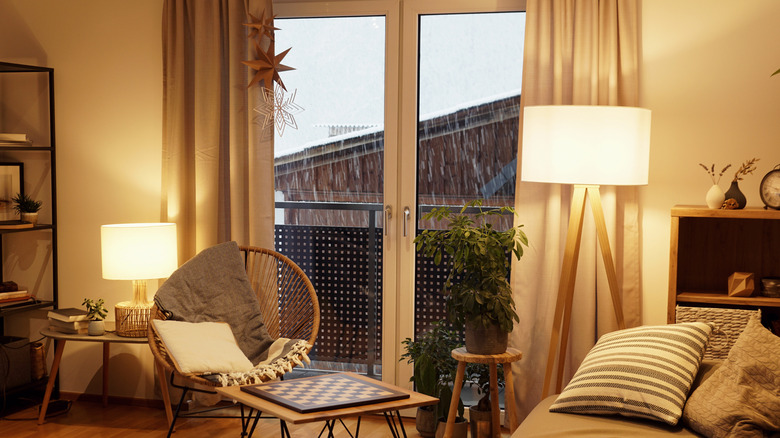These Are Emily Henderson's Rules When Lighting Your Home
Emily Henderson has been blogging about homes for more than ten years. Though she started as a personal blogger, she's grown into a reliable expert for all things interiors by providing tips and ideas to beautify your home. On her blog, not only did she share light fixtures from floor lamps to chandeliers to table lamps that she loves, but she also shared how to use these items like a designer. Interior designers see lighting as a very powerful tool, and not just so you can see all the other features of the design.
Lighting draws us into a space, creating visual interest and stimulation, says John Cullen Lighting. Lighting is one feature in a home that's both aesthetic and functional. Not only do you need lights to illuminate the space and perform certain tasks, but lighting can also be a way to command attention. And you don't need to hire a lighting designer to achieve this. With Emily Henderson's tips, you can learn how to light your home like a professional.
Know the lighting layer
First, it's important to understand how interior designers and lighting designers use light in a space. Emily Henderson encourages readers to know the three layers of light: ambient, accent, and task. Each room should have a combination of the three to have a fully finished lighting design.
Ambient lighting is also called general lighting. This is the kind of light that gives a room its overall light, says Alden Miller Interiors. You want to think of ambient lighting as doing the job of natural light when natural light is not available, such as on cloudy days or at night. An example of ambient lighting is recessed lights in a living room.
Accent lighting is useful but often decorative, adding visual interest by highlighting focal points in a room. Accent lights don't have to light an entire room but rather a small portion or detail, such as a chandelier over a dining room table or picture lights over artwork. The last kind of lighting is task lighting, and it's exactly what it sounds like, lighting needed for a specific task. These are smaller fixtures strategically placed for certain activities or jobs. A light on a desk, next to a reading chair, or illuminating the counters in your kitchen are all examples of task lighting.
Light from multiple sources and multiple heights
After understanding the different types of lighting, Emily Henderson tells readers to use them all. Each room should have multiple sources of light, and the lights should sit at multiple heights. You should have multiple sources of lighting because having one won't be sufficient to light the entire room. Henderson says to aim for two to three sources of light in each room. You should also have fixtures in different places and different heights to help distribute light throughout the room.
With this in mind, you can start mixing and matching lighting fixtures. For example, the living room can have overhead lights, a table and floor lamp, and wall lights. A bedroom can have overhead lights and lamps on a bedside table. Of course, they don't have to be on at all times or at the same time. Use overhead lights to illuminate the entire space when you're working in the space, but turn them off and opt for table or floor lamps when it's time to relax. But be cautious about doing too much in one room, says The Lighting Gallery. Not every room needs all three types of lighting. You also don't have to have multiple sources of the same kind of lighting if the room doesn't allow for it. Don't overstuff the room with table lamps in an effort to layer your lighting. For most living rooms, for example, one or two will be sufficient.


